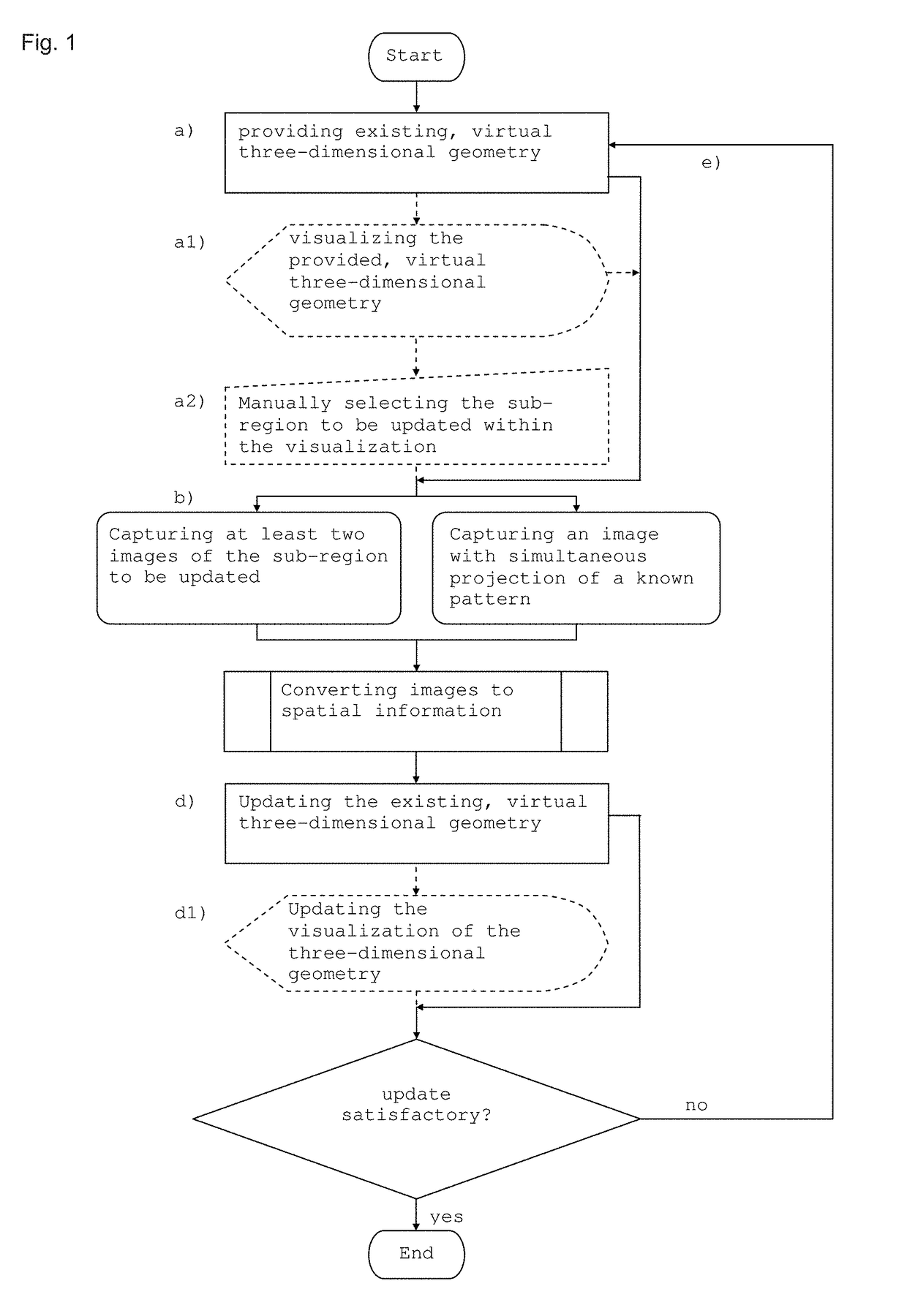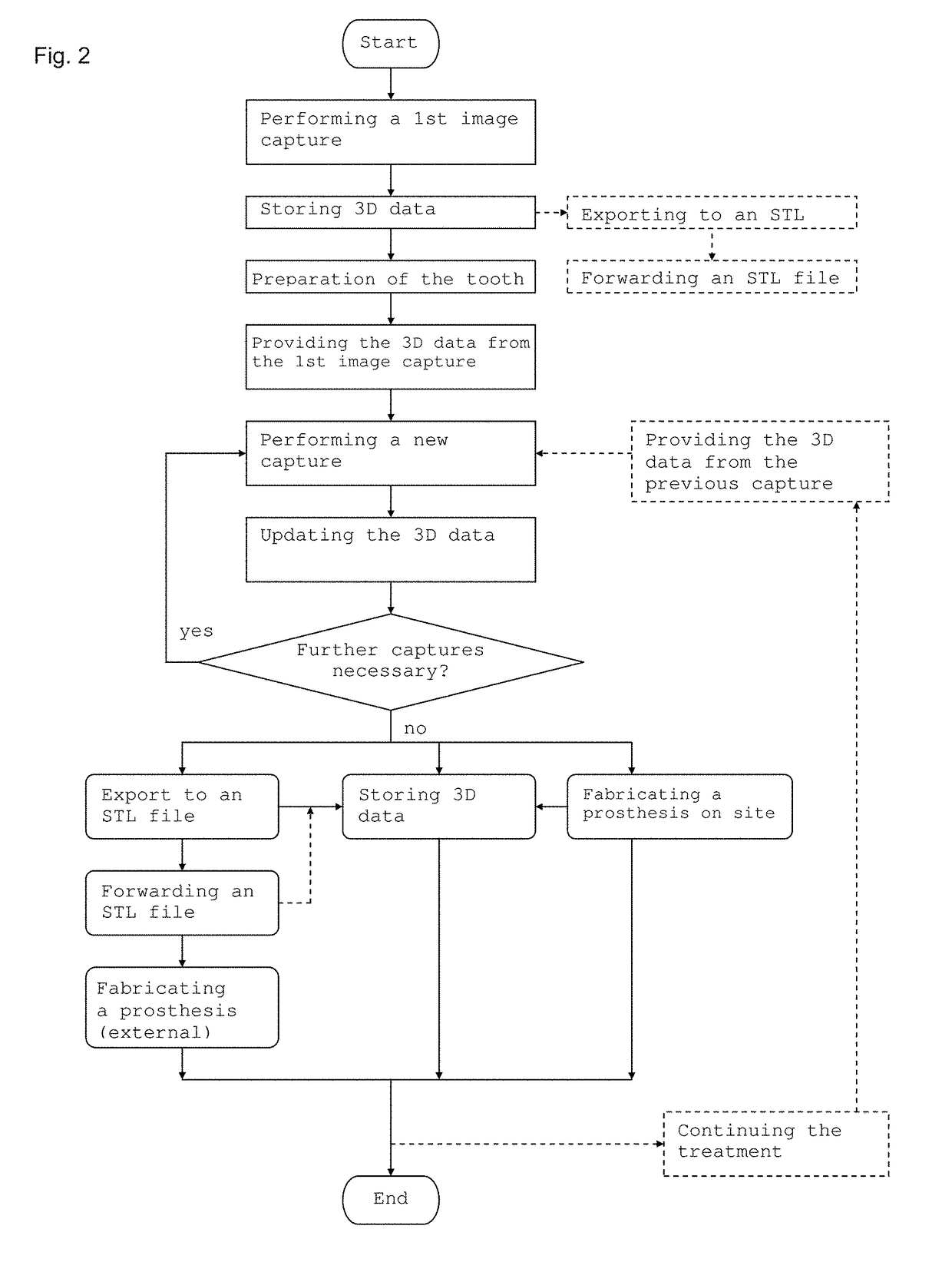Method for continuation of image capture for acquiring three-dimensional geometries of objects
a three-dimensional geometries and image capture technology, applied in the field of image capture for acquiring three-dimensional geometries of objects, to achieve the effect of saving time and deepening the ton
- Summary
- Abstract
- Description
- Claims
- Application Information
AI Technical Summary
Benefits of technology
Problems solved by technology
Method used
Image
Examples
Embodiment Construction
[0036]FIG. 1 shows an embodiment, according to the invention, of the sequence of the method. In this case, first an existing, virtual three-dimensional geometry is provided originating from, for example, an earlier capture. The latter can optionally already be visualized. When the latter is displayed, a sub-region that is to be updated can also optionally be selected in the visualization. Thus, the method can be accelerated. For the functionality of the method, this step, however, is not imperative.
[0037]Then, the sub-region that is to be updated is captured. This can be done according to a first embodiment of the method by an image being captured with simultaneous projection of a known pattern. The type of pattern, i.e., whether in this case, for example, it is a regular striped pattern or a random pattern, is not decisive here for the invention since in any case, because of the surface structure of the sub-region to be captured, it results in distortions of the known pattern, from...
PUM
 Login to View More
Login to View More Abstract
Description
Claims
Application Information
 Login to View More
Login to View More - R&D
- Intellectual Property
- Life Sciences
- Materials
- Tech Scout
- Unparalleled Data Quality
- Higher Quality Content
- 60% Fewer Hallucinations
Browse by: Latest US Patents, China's latest patents, Technical Efficacy Thesaurus, Application Domain, Technology Topic, Popular Technical Reports.
© 2025 PatSnap. All rights reserved.Legal|Privacy policy|Modern Slavery Act Transparency Statement|Sitemap|About US| Contact US: help@patsnap.com



